Kurukshetra is the second word in the most popular of Indian scriptures – Bhagwad Gita. It is a place that we associate with the Mahabharat war between Kauravas and Pandavas. Anyone who grew up in India or even knows India a bit – has heard of it. Apart from the war, it is also the place where Bhagwad Gita was first spoken making it a Dharmakshetra – the land of Dharma. Dharmakshetra is indeed the first word of the Bhagwad Gita.
I visited the place as a kid. I visited it again recently and this post is primarily based on that visit.
What is Kurukshetra

Kurukshetra literally means the region of Kuru. Kuru was a king of the Bharat dynasty, whose descendants were Kauravas and Pandavas. Kshetra means region and not a city or town. The town that we know today is a post-1947 creation. It was a refugee camp that was named so and the camp became a city.
The old town that is identified with the Mahabharat war is Thanesar – from Sthaneshwar, based on the ancient Shiva temple of the same name.
Scriptures
As per the scriptures, this holy place is the area bounded by the following:
South of Turghana (was it named after Shatrughana?) or modern-day Sirhind in Punjab
North of Khandava or modern-day Delhi
East of Maru (meaning desert) or modern-day Rajasthan
West of Parin ( no idea what it means)
River Saraswati used to flow through this region. In fact, some sources define the region of Kurukshetra as the region between Saraswati and Drishadvati rivers.
Chinese Traveler Huan Tsang or Xuan Zang also visited Thanesar during the rule of King Harsha. He talks about various temples and Buddhist Stupas & monasteries here. We will explore what remains to this date in this post.
In ancient times, Kurukshetra was known by names like Uttarvedi, Brahmavedi, and Samast Panchak.
During my travel in the town, I discovered the 48 Kos area of Kurukshetra which is marked by various Teerthas. There is a 48 Kos Yatra that is also undertaken, though I do not know of anyone who has done it.
Read More – Panchkroshi Yatra of Kashi
Kurukshetra in 21st CE
I was visiting the city, after many years. The city has grown like every other city in India. It is far more crowded and chaotic than I remember it from my childhood. This time I wanted to see all the important places in the city.
Markanseshwar Mahadev Temple – Shahabad Markanda
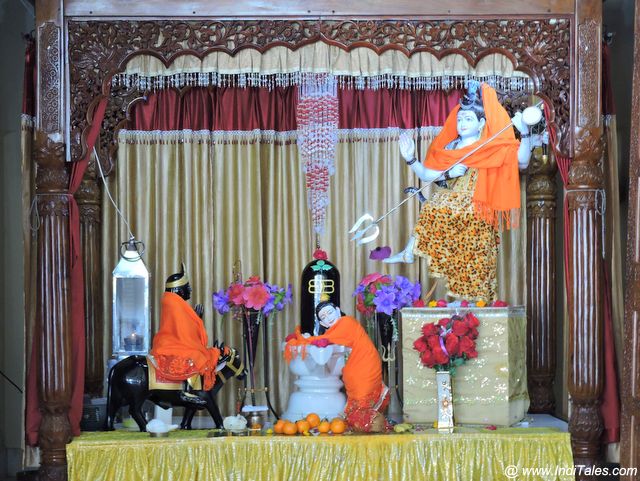
We drove down from Patiala and our first stop was not really in the city but in a town called Shahbad Markanda. It is located on the banks of the Markanda River and is named after the great Maharishi Markandeya.
The legend is that Maharishi Markandeya was born with only 16 years to live. However, he meditated on Shiva and made him increase his age not by increasing the number of years but by making the length of each day of his life equal to eons. His image is always shown by hugging the Shivalinga.
Markandeshwar Mahadev temple is named after him. It is supposed to be the spot where Markandeya Rishi did his meditation on the banks of River Markanda I assume also gets its name from him. The river is almost dry now but you can see a railway bridge across it quite close to the temple.
I visited both temples – the Markandeshwar Mahadev temple and the temple dedicated to Markandeya Rishi. They are both fairly new temples. I assume the old temples would have existed in the same place. The use of ceramic tiles gives them a clinical look. There are well-maintained gardens around the temple. A small market springs up outside the temple telling me that a lot of people visit the temple.
Places to see in Kurukshetra
The city has a lot of places to explore. Not many need too much time, so you can fit in a lot of things in a day.
Temples in Kurukshetra
It is a historic and spiritual place and is expected to have a lot of temples. Here I cover some of the important temples, the town is full of temples.
Sthaneshwar Mahadev Temple

Sthaneshwar Mahadev temple is the oldest temple in the city. This is the temple that gives the name to the town of Thanesar – a distorted version of Sthaneshwar. So, Sthabeshwar is also called the Nagar Devta or the guardian deity of the city.
In the scriptures, this is referred to as Sthanu. It is believed that Brahma himself had established the Shivalinga here. Sthanu Teerth as it is called is surrounded by Shukr Teerth in the North, Som Teerth in the East, Daksh Teerth in the South, and Skanda Teerth in the West. It is believed that there were thousands of Lingas surrounding the main Shivalinga at Sthaneshwar.
Lord Krishna and Pandavas supposedly worshipped the Shivalinga here before the Mahabharat War. Banbhatt’s Harshcharita talks about Shiv Puja or worships in every home in Sthaneshwar. After the third battle of Panipat, Marathas contributed to the renovation of this temple. A gurudwara close by commemorates the visit of the Sikh Guru, Guru Tegh Bahadur.
There is a small tank in front of the temple. The small temple has ancient Shivalinga. When we visited the Pujari was doing the evening Shringar of the Shivalinga. It is a small temple considering the importance it has. The structure is simple.
Bhadrakali Temple or Devikoop

Bhadrakali is an ancient temple with a tall narrow Shikhara that can be seen from quite some distance. Dedicated to Bhadrakali Avatar of Devi, this is one of the 51 Shaktipeethas in India. This is where the right ankle of Devi Sati fell.
In Mahabharat, it is mentioned that Pandavas prayed at the temple before the beginning of the Mahabharat war. Temple records say that the ‘Mundan’ ceremony of Krishna and Balram was performed in this temple.
It is a relatively better-maintained temple in the city. You need to go one story up through the image of a yellow Chakravayuh or labyrinth to be inside the temple.
Lakes or Sarovar’s of Kurukshetra
The place is home to many ancient lakes called Sarovar. Some of them continue to exist and they are all places of pilgrimage. Almost every Sarovar has a legend associated with it. Bathing in some of these Sarovars is considered auspicious on certain days like during solar eclipses or on the new moon that falls on a Monday called Somvati Amavasya. Let me take you to some of these famous ancient Sarovars.
Brahma Sarovar
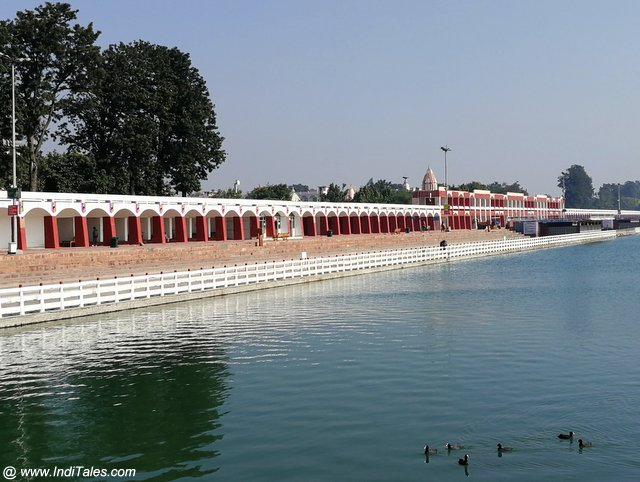
Brahma Sarovar is a huge man-made pond. In fact, it is believed that it is the first-ever man-made pond built by King Kuru whom we met earlier. It is supposed to be the site where Lord Brahma performed his first Yagna and hence gets his name. Brahma Sarovar is an integral part of the heritage city and is sometimes also called Kurukshetra Sarovar.
Brahma Sarovar is extremely popular for bathing during Solar eclipses. Since time immemorial, millions of people flock here to take a dip in the holy Brahma Sarovar, every time there is a solar eclipse.

There are various ghats all around the pond. The day I visited it was absolutely empty and it felt as if it has been constructed yesterday. We walked around the pond and reached the Sarveshwar Mahadev temple owned by a Nirvani Akhada. The temple has old plaques and inscriptions but the current structure is fairly recent in pink sandstone. The temple has a Shivalinga surrounded by colorful ceramic tiles.

Must say both the Brahma Sarovar and the temple were very clean, but I hardly saw any life around it. I love ancient places for the soul they have, and for some parts of the past that are still living there. There are no remains of the past here. There are no vibes that I felt either at the Brahma Sarovar or at the temple. A board tells you the stories and you just believe them.
As per Mahabharat, this is the place where Duryodhana came to hide after he lost the Mahabharat War.
Jyotisar

The Jyotisar is the most important Sarovar in Kurukshetra according to me. It is the place where Bhagwad Gita was spoken during the Mahabharat War. There is a Saraswati temple near the Jyotisar Pond.
My experience was quite bizarre here. When we reached in the evening, there was no one there. A security guy tried to fool around. We had planned to reach here in the evening so that we can see the Light and Sound show here. However, there was no sign or board informing about it at Jyotisar. No one would answer our questions.
As it was getting dark, we felt uncomfortable and decided to leave. I could not see any arrangements for tourists or any tourists for that matter. No boards (while there were information boards almost everywhere else). No information and no staff. Very disappointing.
Bhishma Kund
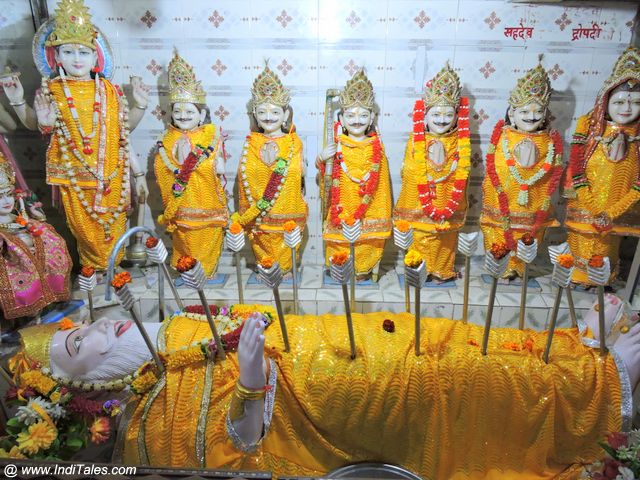
This is a small pond with a big story. During the Mahabharat war when Bhishma was lying on the bed of arrows, this is where the Arjuna hit the arrow to get water for him. This is also the place where Yudhishtir came back after the Mahabharat war to learn the Raj Dharma from Bhishma.
As per scriptures, Bhishma Kund is located on the left bank of Saraswati. Today, of course, there is no trace whatsoever of the river here. It is also identified as Anrak Teerth, surrounded on the East by Brahma, South by Shiva, North by Vishnu, and West by the wife of Rudra.
The small temple next to the pond re-creates the scene of Bhishma lying on the bed of arrows in bright yellow color.
Sannihit Sarovar

The Sannihit in Sanskrit means where everyone collects or joins in one place. According to Indian scriptures, it is believed that on every New Moon day and on the days of Solar Eclipse all the holy waters from across India collect here in this Pond or Sarovar. So, if you take a bath or even a dip in Sannihit Sarovar on these days, you attain Moksha or freedom from the circle of life and death.
Sannihit Sarovar is also believed to be the meeting point of the 7 Saraswati Rivers. Rishi Dadhichi donated his bones to Indra at this place. He made his Vajra from his bones to kill the Asura Vritasur.
There are British Era inscriptions near Sannihit Sarovar dating 1921 CE. It talks about the foundation laying of a library in the place. There was a donation of Rs 2500/- made and it also records a 1851CE donation of Rs 500/-. Apparently, the Brahmins of Kurukshetra had requested the Governor-General of Punjab to not kill fish in holy Sarovars and not to cut trees around them. Unfortunately, there are hardly any trees lining the Sarovars today.
There are three small temples dedicated to Sura Narayan, Dhruv Narayan, and Laxmi Narayan. The temples are small and bright. Close by there is a small temple now dedicated to Durga, but that is supposed to be the site of Chakravyuh of Mahabharat.
Wall Murals in the heritage city
The fascinating part of my visit was the lovely wall murals on the outer walls of a building called Gita Bhavan, opposite the Sri Krishna Museum.
Artists have used the traditional painting traditions of India to create these murals depicting scenes from Mahabharat, with a special focus on Gita being told by Krishna. I could see Madhubani, Pahadi Guler, Pattachitra, and contemporary styles. There was one mural painted like Ganjifa cards in circles.
Museums in Kurukshetra
Museums are definitely a recent addition to the city.
Sri Krishna Museum

If there is one museum you have to see in the city, go to the Sri Krishna Museum. There is a good attempt to get all kinds of artifacts – real or reproduced related to Krishna. There are sculptures, paintings, bronze images, and all kinds of artifacts telling the Krishna story. Soft music on Krishna accompanies you as you walk through this multi-storied building. The last part of the museum has a giant multi-media display recreating the Mahabharat and Mahabharat War.
Museum lawns have stone sculptures in Odisha Style. I liked the life-size sculpture of Devaki and Krishna or was it Yashoda and Krishna? There is another one of the Virat Roop of Krishna.
You need at least an hour to go through this museum.
Panorama and the Science Center
This Science Center is located right next to the Sri Krishna Museum. It also recreates Mahabharat, but I could not visit this museum due to lack of time.
Dharohar Museum
Dharohar Museum is located on the University Campus. This is a museum to get acquainted with the general culture of Haryana.
ASI Museum
ASI Museum is located in the Sheikh Chilli Ka Maqbara. It is supposed to have archaeological finds from the Harsh ka Teela.
Other Places to Visit in Kurukshetra
Every era leaves its imprint on a place. Here are some markers that tell us about the continued habitation at the place.
Sheikh Chilli Ka Maqbara

It is ironic that in the city of Bhagwad Gita and Mahabharat War, the best-preserved monument is the tomb of someone called Shiekh Chilli. I do not really know who he was, but his tomb is beautiful and impeccably maintained with a proper char bagh garden around. The building also houses the ASI museum which was closed the day I visited.
Harsh Ka Teela
In terms of pure antiquity, these are the oldest surviving ruins in the city. A board by ASI tells me that this was the capital of King Harshvardhan of the Pushyabhuti dynasty in the early 7th CE. Poet Baanbhatt has written about the king and his capital in his poem Harshcharita. The poem mentions a fort and a double-story palace in white. None of that remains. The mound of Harsh still exists though.

This archaeological site was first excavated by Cunningham and then post-independence by various ASI officials. Excavations reveal that this site was inhabited at least since 1000 BCE and lived through the Kushan, Gupta, and Rajput eras and to date. Some of the excavated things can be seen at the ASI Museum.
It is interesting to walk through the various open areas on a mound that goes up and down with freshly manicured grass on it. It is like windows to the past in the middle of a beautiful garden.
Travel Tips
- There is a Govt bus service that takes you to around 15 Tourist Places in the city just for Rs 50/-. There are boards at all important places in the city giving details of this service. I have not used it, so no comments on the availability and quality of this service.
- Most places are located at a distance from each other, so you would need some transportation to go around. Auto Rickshaws and Cycle Rickshaws are the available options.
Hotels
- There are two Haryana Tourism Hotels in the city. One is in the city and another is close to the National Highway. I stayed in the latter it was Ok.
- There are no high-end hotels in the city. The best one maybe three stars with a stretch. Check out the hotels and availability here.
You can also do a day trip from Chandigarh as you would find better hotels in Chandigarh.
Kurukshetra is a very important place in Indian History and Spirituality. I wish Haryana Tourism does something to make it more tourist-friendly. They probably do not need a tourism economy and you can see that in the attitude of people there.
We could not find any great place to eat. Not that what we ate in a roadside place was bad, but as a tourist when you sit down to eat, it is your time to relax.
The tourism experience needs to be much better. The city can definitely employ a lot of guides who can take tourists around the city & tell them innumerable stories. As of now you just have to depend on the boards outside the places. Thank God for that.






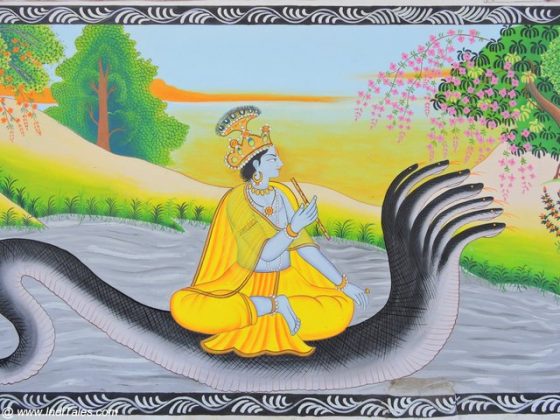






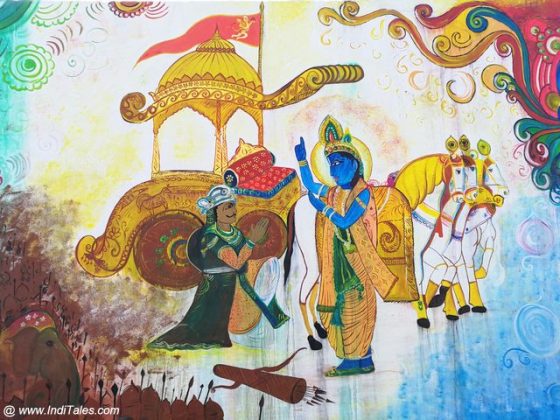
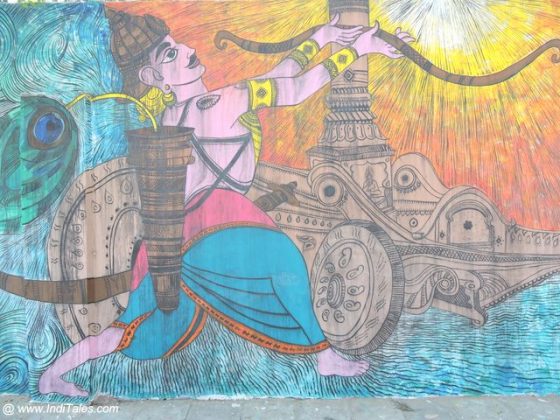











Nice and informative.
Nice and informative.
I am yet to visit Kurukshetra…I have heard only mixed reviews until now.
However, your article is elaborate and informative and has re-kindled my interest to visit the place.
It is indeed sad that we have been unable to preserve our heritage structures due to various invasions and have reached a stage where our epics are being branded as Myths!
Meenakshi – Kurukshetra should be our biggest spiritual center. We are doing our bit by talking about it – let’s hope other stakeholders also do their bit.
Such lovely temples and I love discovering archaeological sites like these-and thinking about how long ago people first inhabited a region! How fortunate to be able to visit as a child
Brooke – Kurukshetra is known for Mahabharat war and Bhagwad Gita – one of our most spiritual texts in India.
Some of this is utterly fascinating! I loved the idea of achieving Moksha by taking a dip in Sannihit Sarova until I read the bit about Rishi Dadhichi donated his bones to Indra at this place. Indian heritage is so complex and fascinating!
Fiona – Indian stories can sometimes be complicated for us Indians too, so I understand they are not easy for you.
We love the mix of history, religion and legends, love the detailed post. Coming from the UK we have a very Eurocentric view of history and literature and are not that familiar with the Mahabharat story. However, we would love to change that and visit India sooner rather than later.
Mahabharat is the biggest epic ever written – a network of stories spread across time and space. Do read and abridged version, there are many available online.
As a kid I grew up watching the Mahabharata telecast as one of the most important telecasts of the time. And the memories are still afresh. However, I always pictured Kurukshetra as a vast stretch of barren land where the epic war happened 🙂 Thanks to you, now I know better. What’s even more pleasing is to see how well the whole area has been developed and is being well maintained with murals, paintings, temples and water bodies included. I will like to take my kid here some day and tell her stories from Mahabharata while we visit the different areas.
Neha – unfortunately, there is a very small part that is maintained, most old sites can do with a lot more maintenance & conservation. It should high up on tourism wish lists but apart from pilgrims, it hardly gets any tourists.
Thanks for sharing the history about Kurukshetra. I love how flowers are used to decorate the Indian temples. I did not know that bathing in the lakes was sacred during solar eclipses and new moons. I am sure it was disappointing to miss the light and sound show in Jyotisar. This is a good overview of things to do in Kurukshetra.
Solar eclipses and new moons are spiritually significant in India, as are many other celestial positions. Each has rituals associated with them.
Interesting place. I really love all of the bright colors in the Indian culture. The murals are so detailed. I looked up Shiekh Chilli and it said he is a character in Indian folklore. It’s kind of odd that such a beautiful monument would be made to a fictional character, although I guess we have Disney in the US.
Kathleen – there are many versions of Sheikh Chilli story, I could not validate if there was ever a real person by that name, for they would not build a tomb for a fictional character.
Kurukshetra indeed has a fascinating history. I can understand why all Indian kids learn about the place. I love the lakes or man-made ponds near the temples. They contribute to the serenity of the area. I’m learning more about India with every one of your blog posts!
Thank you, Linda – I am discovering India as I blog.
Great post Anu. This is the first time I am reading a post on Kurukshetra. We usually travel once a month from Delhi to Chandigarh but have never thought till day about exploring this land. Hopefully, now will do that, after reading your post.
Great Suruchi – do let me know how you found the place after your visit. Chandigarh was home once 🙂
The story of Maharishi Markandeya is quite interesting, especially the part about each day being eons. I had never heard it before. I haven’t been to India yet. I’ll have to add Kurukshetra to the itinerary when the day comes!
Francesca – not many in India would know this story. India is full of stories, in fact, storytelling was the way of teaching everything. Please do come over to India and spend some time here.
As you say, anyone who is here in India must have heard of Mahabharata and Kurukshetra. I could have never imagined that the place had so many things to see. I also did not know that Thanesar was the original Kurukshetra. Great story mixed with mythology. 🙂
Nisha – I have known Kurukshetra and Thanesar since childhood, have some roots there but it is now that I went there with traveler’s eyes.
Kurukshetra sounds like it has quite a lot of historic and legendary significance, I do enjoy visiting regions which have ancient heritage and deep cultural roots – they’re more fascinating than the 21st century city. Sthaneshwar Mahadev temple sounds like an absolute must, and the various Sarovar’s look peaceful. I love visiting ruins though, so Harsh Ka Teela would probably be my highlight – I enjoy standing in a place and trying to imagine what life would have been like centuries ago when it was in the height of its day 🙂
Megan – I also enjoy visiting ancient places and wonder how they would have been in their hay days. The journey of cities is also the journey of mankind.
I visited Kurukshetra in 2012 from Delhi. I have a post on it. Loved your post as it helped me to relive my memories. This place should be high on tourism map. Govt should build/recreate something to celebrate the spiritual nerve centre of India
Amitava – despite all the PR, Kurukshetra is not easy for a traveler. This should be the spiritual center where people should come for retreats on Gita, Yoga and other scriptures. Maybe some of us need to be the catalyst in the process.
Nice write up. Visited it last year. On our way we went to Panipat also. Panipat memorial is also well maintained. It was an emotional visit..considering all the sacrifices we made there. Please add Panipat in “places to visit around Kurukshetra considering its historical importance. Panipat is a holy place in its own right. Thx. Keep writing
Amruta – will write about Panipat as and when I go and explore it. It is historically important for all the battles that were fought here but I am not aware of any spiritual places in Panipat. Please tell me more about them.
For an Indian mythology fanatic, Kurukshetra is ‘one must visit’ destination. ????
Awesome information…as a HINDU and as an INDIAN
It is our duty to know these and keep our ancient history alive ….
Proud to be born here..
Great information. Thank you so much 🙂
Thanks for sharing this informative and comprehensive blog. This is very interesting blog. The pictures are really beautiful and the way you explained about the places to visit it also great.
The Epic Mahabharata was huge and a long battle, and that’s why I often found people asking if the soil of Kurukshetra is still red. You have summarised it beautifully. I recommend you to pay the 2nd visit to this holy town and see it yourself.